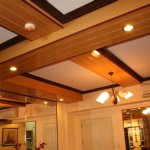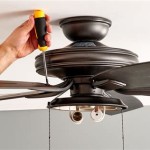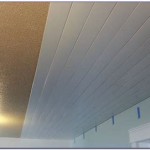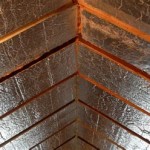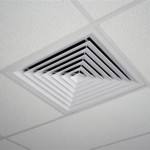Can You Hang A Mobile From The Ceiling In Ohio? A Comprehensive Guide
The simple question of whether one can hang a mobile from the ceiling in Ohio is surprisingly complex, extending beyond a mere yes or no answer. It involves considerations of building codes, lease agreements (if applicable), potential safety hazards, and responsible installation practices. Therefore, a thorough understanding of these factors is crucial before proceeding with such a project.
The installation of a mobile, regardless of its aesthetic appeal or functional purpose (e.g., for a baby’s crib), requires careful planning and execution. It is not simply about securing the mobile’s hanging point to the ceiling. The weight of the mobile, the type of ceiling material, the structural integrity of the ceiling, and the potential impact on the safety of occupants are all critical elements that must be evaluated.
This article aims to provide a comprehensive guide to understanding the various aspects that govern the hanging of a mobile from the ceiling in Ohio, offering insights into relevant regulations, safety guidelines, and best practices. This information is intended for homeowners, renters, and anyone else considering this type of installation.
Understanding Ohio Building Codes and Regulations
Ohio’s building codes, primarily based on the International Building Code (IBC) with amendments specific to the state, address various aspects of construction and renovation. While these codes generally do not explicitly prohibit hanging a mobile from the ceiling, they indirectly influence the process through regulations concerning structural integrity, fire safety, and occupant safety.
The IBC outlines requirements for ceiling load capacity, which are particularly relevant if the mobile is heavy or if multiple items are being suspended from the same point. It is crucial to determine the weight-bearing capacity of the ceiling joists or the structural components to which the mobile will be attached. Exceeding the load capacity can compromise the ceiling's integrity, potentially leading to collapse or other structural damage.
Furthermore, fire safety regulations may come into play depending on the materials used in the mobile’s construction. Highly flammable materials could pose a fire hazard, especially if located near light fixtures or other heat sources. While the regulations might not directly prohibit the use of certain materials in a mobile, they mandate the use of fire-resistant materials in building construction, and extending this principle to decorative elements is a reasonable safety precaution.
Ohio Revised Code Chapter 3781 governs the Ohio Board of Building Standards and the administration and enforcement of the Ohio Building Code. This legislation provides the framework for ensuring that building projects, including minor alterations like hanging a mobile, adhere to safety and structural standards. Although a single mobile installation is typically not subject to formal inspection, understanding the underlying principles of these codes is essential for responsible and safe execution.
It's essential to consult with a qualified building inspector or structural engineer if there are any doubts about the ceiling's load-bearing capacity or the suitability of the chosen hanging location. This consultation ensures compliance with relevant codes and provides peace of mind regarding the structural integrity and safety of the installation.
Lease Agreements and Landlord Permissions for Renters
For renters in Ohio, the ability to hang a mobile from the ceiling is heavily influenced by the terms of the lease agreement and the landlord's policies. Most standard lease agreements contain clauses addressing alterations or modifications to the property. These clauses often require tenants to obtain written permission from the landlord before making any changes that could potentially affect the property's structure or appearance.
Hanging a mobile typically involves drilling holes into the ceiling, which is generally considered a modification. Therefore, it is imperative to review the lease agreement carefully to understand the landlord's specific requirements for such alterations. Failure to obtain permission beforehand could result in lease violations, fines, or even eviction.
When seeking permission from the landlord, it is advisable to provide detailed information about the mobile, its weight, and the proposed method of installation. Demonstrating a responsible approach and outlining the steps taken to minimize potential damage can increase the likelihood of approval. Consider offering to repair any damage caused by the installation upon vacating the property.
Landlords have the right to deny permission for alterations that they deem detrimental to the property's value or safety. They may have concerns about potential damage to the ceiling, the structural integrity of the building, or the liability associated with the installation. It's crucial to engage in open communication with the landlord to address any concerns and explore alternative solutions if necessary. Perhaps a freestanding mobile stand or a tension rod system that does not require drilling into the ceiling could be considered.
Even if the lease agreement does not explicitly address hanging items from the ceiling, it is always a good practice to seek clarification from the landlord. This proactive approach avoids potential misunderstandings and ensures compliance with the property's rules and regulations. Furthermore, document all communication with the landlord in writing, including the permission granted (if any), to protect yourself in case of future disputes.
Safety Considerations and Best Practices for Installation
Regardless of whether you own or rent the property, prioritizing safety is paramount when hanging a mobile from the ceiling. A poorly installed mobile can pose a serious hazard to occupants, especially if it falls and causes injury. Several key factors must be considered to ensure a safe and secure installation.
First, accurately assess the weight of the mobile. This will determine the appropriate type of hanging hardware and the necessary support structure. Lightweight mobiles can typically be supported by smaller hooks or anchors, while heavier mobiles require more robust hardware and potentially reinforcement of the ceiling joists.
Second, identify the type of ceiling material. Different materials require different types of anchors. Drywall, plaster, and concrete ceilings each necessitate specific anchors designed to provide a secure hold. Using the wrong type of anchor can lead to slippage and eventual failure. For instance, molly bolts or toggle bolts are often recommended for drywall ceilings, while concrete anchors are necessary for concrete ceilings.
Third, locate the ceiling joists. These are the structural members that provide the primary support for the ceiling. Attaching the mobile directly to a joist offers the most secure and reliable hanging point. A stud finder can be used to locate the joists, and it is crucial to ensure that the attachment point is centered on the joist to prevent splitting or weakening.
Fourth, use appropriate hanging hardware. Select hooks, chains, or cables that are rated to support the weight of the mobile with a safety margin. Avoid using flimsy or low-quality hardware, as it may fail under stress. Ensure that all connections are secure and properly tightened.
Fifth, test the installation thoroughly. After hanging the mobile, gently tug and shake it to ensure that it is securely attached. Periodically inspect the installation for any signs of loosening or wear and tear. If any issues are detected, address them promptly to prevent a potential collapse.
Finally, consider the placement of the mobile in relation to other objects and occupants. Ensure that the mobile is positioned in a location where it will not be easily bumped or knocked down. Avoid hanging it directly above sleeping areas or areas where children play, as a falling mobile could cause serious injury. If the mobile has sharp or pointed edges, take extra precautions to prevent accidental contact.
By carefully considering these safety factors and adhering to best practices for installation, you can minimize the risk of accidents and ensure that the mobile remains securely suspended from the ceiling.
In summary, while hanging a mobile from the ceiling in Ohio is not explicitly prohibited, it requires careful consideration of building codes, lease agreements (if applicable), and safety precautions. Understanding the relevant regulations, obtaining necessary permissions, and following best practices for installation are essential for ensuring a safe and secure outcome. By taking a responsible and informed approach, one can enjoy the aesthetic benefits of a mobile without compromising the structural integrity of the building or the safety of its occupants.

White Spiral Star Nursery Mobile Decor Gender Neutral Baby And Children S Room Felt Ball Ceiling 100 Wool Ecofriendly

Boucle Clouds Hanging Mobile Bundl

Cincinnati Ceiling Feature Ekko Mobiles Large Custom Hanging Kinetic Art And Sculptures For Home Business Public Spaces

Boucle Clouds Hanging Mobile Bundl

Photos Of Large Atrium Sculpture Kinetic Mobile Installed

Boucle Clouds Hanging Mobile Bundl

Photos Of Large Atrium Sculpture Kinetic Mobile Installed

Overhead Garage Storage Columbus Ohio Your Guys

7 Ways To Hang Plants From The Ceiling Without Drilling

Pottery Barn Kids Jack Nautical Al Baby Crib Mobile Blue Multi 9085u
Related Posts

